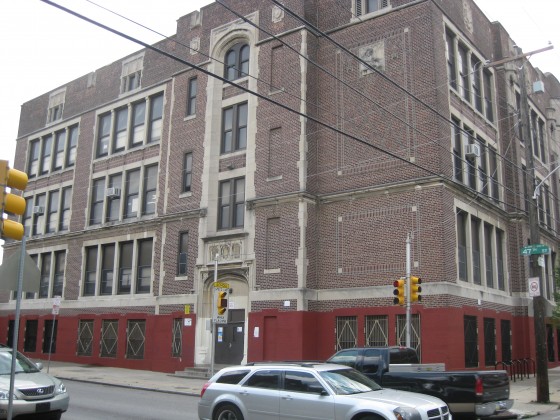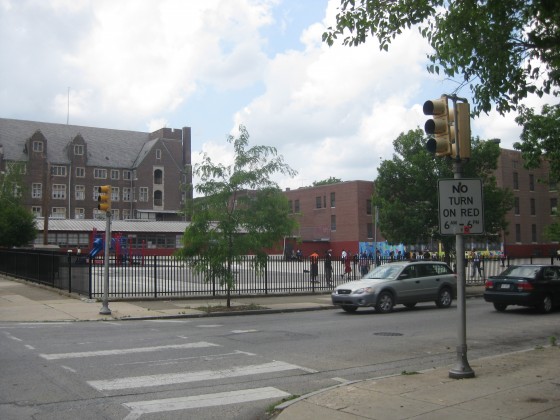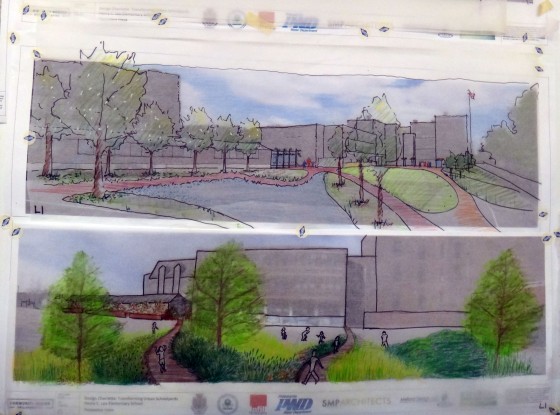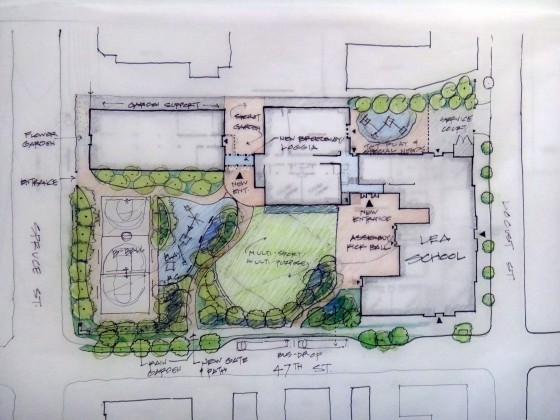Ideas about how to green Philadelphia schoolyards, more specifically, the Henry C. Lea School at 4700 Locust St. in West Philly, were abound this month at Transforming Urban Schoolyards, a design charrette hosted at the Center for Architecture in Center City on May 10th.

Lea school
Concepts focused around redesigning the schoolyard to serve as a front entrance, perhaps on Spruce Street, and moving dumpsters to a less visible area, according to Linda Dottor, program manager at the Community Design Collaborative (CDC), the group that hosted the meeting in collaboration with the Philadelphia Water Department, Environmental Protection Agency and the American Institute of Architects.

Lea schoolyard

Vision of the future?
Teams of designers, students, parents, teachers and educational advocates met for an intensive six-hour day of design and discourse about redesigning the schoolyard. Another possibility considered was extending the preexisting “Secret Garden,” which already has planters and vegetation. Incorporating storm-water management tactics, like landscaping and rain gardens were also part of the discussion. And one parent suggested the schoolyard could tell the story of the school’s identity, one infused with students from Cambodia to West Africa and more, perhaps by hanging flags of students’ respective homelands.

Site plan that came out of the charette
Though the charrette, hosted after various community groups (like the West Philadelphia Coalition of Neighborhood Schools) approached members of the CDC about the topic, focused on two schools, the Lea School and the Kelly School in Germantown, the themes discussed will become part of a larger citywide discussion about greening schoolyards. It’s also embedded within the Infill Philadelphia initiative to support Green City, Clean Waters, the city’s 25-year plan to enhance its water infrastructure.
It’s interesting to ponder how the green concept has evolved the past decade. While schools still need blacktop for traditional American games like basketball (accounted for in the site plan above), many school officials and parents are interested in transforming schoolyards into spaces community members can access and even host various events at in the future. It’s all about finding a happy balance.
–Lou Mancinelli

Leave a Reply